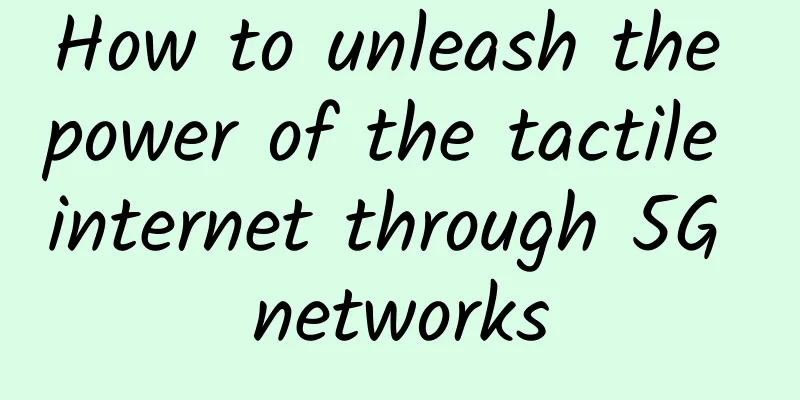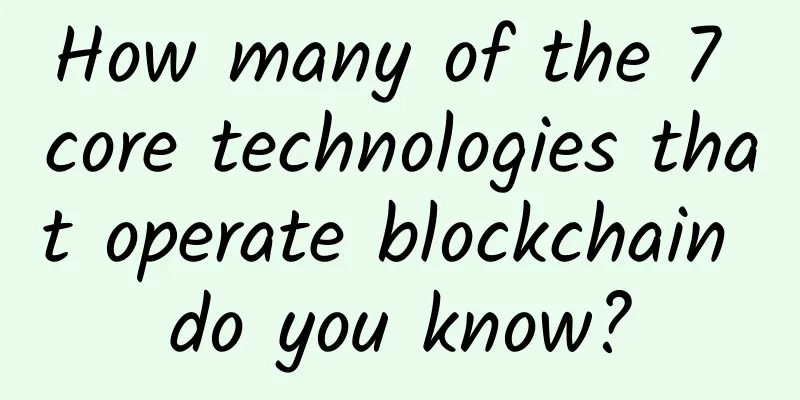Learn more! The principles behind Wi-Fi revealed!

|
Wi-Fi and 4G/5G cellular networks are the two most commonly used access methods when we go online. These two access methods may not seem to make any difference when you are surfing the Internet, but they have completely different design philosophies. The cellular network uses the base station as the cell center, and the base station is responsible for the central control, user authorization and scheduling of the cell. Taking 5G as an example, the base station broadcasts the synchronization signal block SSB in each frame. SSB contains the cell's PCI (physical cell identifier), base station synchronization time information, air interface information, access control and other parameters. After confirming the synchronization signal, the mobile phone sends the access preamble sequence Preamble through the random access channel PRACH to obtain the base station's authorization to access. Different users are distinguished by different ZC orthogonal sequences. After access, the wireless channel allocates uplink and downlink time slots (specifically TDD network), and the base station and all terminals send or receive data within a fixed time. This design concept takes the base station as the center of the cell and adopts the design philosophy of center planning. Wi-Fi networks are different. When designing Wi-Fi, APs (APs are equivalent to base stations in 5G) and user terminals are considered on an equal footing. APs and terminals based on the 802.11 protocol use the Carrier Sense Multiple Access/Collision Avoidance (CSMA/CA) method to compete equally for the wireless channel. When accessing the network, APs and terminals, as well as terminals, first monitor the wireless channel. When ensuring that the channel is not occupied, access the network. Devices are not hierarchical, but use a self-coordinated competitive access mode to access the network. In a sense, Wi-Fi networks are a decentralized design philosophy. These two design philosophies have their own merits. The focus of cellular networks is on capacity and efficiency when multiple devices are connected. However, due to its use of unlicensed spectrum and cost considerations, Wi-Fi is more focused on anti-interference and low cost when it is designed. Both solutions can make full use of channels. Referring to the test results released by Aruba Networks, it can be seen that the spectrum utilization efficiency of LTE and Wi-Fi 6 at the MAC level is very similar. In the case of single stream and 256QAM, the spectrum utilization efficiency can reach more than 5Mbps/Hz. Figure 1 Comparison of spectrum efficiency between LTE and Wi-Fi Access process and roamingSo, how does Wi-Fi without central control work? The first step is to find a Wi-Fi network. Since the AP in the Wi-Fi network does not have a broadcast function, it is impossible for the terminal to know in advance whether there are available network resources and AP parameters. Here, the terminal uses an active probe method to make the request. The terminal will send a series of probe sequences on the first 20MHz channel of Wi-Fi and then wait for the AP to respond. If the AP does not respond after 20ms, the terminal will switch to the next 20MHz channel and repeat the above actions until it receives a response from the AP and confirms the AP's working frequency band and access parameters before it can access the network. Figure 2 The process of a mobile phone actively scanning a probe to search for a channel At this point, you may be thinking, if there are multiple Wi-Fi APs indoors, when the user is moving and the terminal switches from one AP to another, do we need to repeat the above AP search process? Each channel has a 20ms interval. It takes a long time to search a circle of channels. Wouldn’t the connection be interrupted? Then how can we ensure the communication quality of video conferences or WeChat voice calls? Nowadays, many offices and even home wireless LANs use multi-AP mesh networking to improve network coverage performance. If the above active probe channel search process is repeated every time the terminal switches AP, it will be very inefficient. Fortunately, the 802.11 working group has considered the problem of cell switching and developed the "neighbor report" protocol in 802.11k. After the device is connected to an AP, the AP will send the BSSID and channel information of its nearby APs to the user. In this way, when the user needs to switch to another AP, he does not need to scan the channel again. The benefits of this are, firstly, it greatly saves switching time and ensures that communication is not interrupted. Secondly, it saves power for user devices, as the devices no longer need to send probes one by one. Thirdly, the wireless channel is also used more effectively, as the AP does not need to frequently occupy the wireless channel to continuously respond to the terminal's requests. Figure 3 AP responds to the terminal device's neighboring AP information via the 802.11k protocol Self-coordination, channel contention access, conflict avoidanceAfter accessing the network, APs and terminals begin to compete for the use of wireless channels. In the Wi-Fi system, the air interface time of the terminal and the AP is uniformly divided into idle (Idle) and opportunistic transmission (TXOP) periods. When there is no data, the device is in the idle period and will not send any information. When a device receives a data transmission request, it begins the "arbitration" process to compete for the wireless channel. There is no central scheduler, and all devices use a "fair competition" mode to win channel arbitration according to data priority. The device that wins the channel will get a 6ms transmission window and then enter the next arbitration period. Figure 4 Air interface time allocation in 802.11 The Wi-Fi device that enters the arbitration process first turns on the channel listening mode, and the RF receiver monitors the 802.11 signal in the wireless channel (Signal Detection). If the detected signal strength is lower than its SD threshold (for example, the threshold is -82dBm in the Cisco solution shown below), the device determines that there are no other Wi-Fi devices using the current channel. Since the frequency band used by Wi-Fi is an unlicensed band, it needs to be shared with non-802.11 devices, such as Bluetooth, remote controls, microwave ovens, etc. Therefore, when judging the channel occupancy, it is necessary not only to monitor the signal of its own 802.11 protocol, but also to detect the power of unknown communication protocols. This brings us to the second detection mechanism - Energy Detection. The function of ED is to determine whether the wireless channel is occupied by other non-Wi-Fi devices and prevent the useful Wi-Fi signals from being submerged in noise. Usually, the threshold of ED is 20dB higher than that of SD. Figure 5 SD and ED settings for Cisco wireless devices Careful users may find that when the network environment is poor, the video call often has audio but the image is stuck. This is actually a Wi-Fi transmission optimization measure to ensure the most basic service. Wi-Fi divides data into four different priorities, from top to bottom: voice (VO), video (VI), best effort (BE) and background (BK). Each level is assigned a different AIFS value. The lower the AIFS value, the higher the sending priority. After the AIFS time ends, the device enters the contention window (CW), starts to listen to the wireless channel, and starts the countdown to prepare for transmission. When the CW countdown ends, if the device finds that the channel is occupied, it will automatically enter the next arbitration period. If the device finds that the channel is idle, it will start to occupy the channel and send data. In the example below, in the first arbitration period, the iPad's CW time was the shortest, and it successfully competed for the channel and obtained the right to send. After the iPad sent data, a new round of arbitration began. After the CW ended, the mobile phone found that the channel was not occupied and obtained the right to send. Finally, the wireless AP won the third round of arbitration and obtained the right to send. Figure 6 Channel competition process of multiple devices After reading this, you may find that the efficiency of this competition process will be significantly reduced when the number of devices increases, and the waiting time for each device to send will become much longer. In actual experience, you may have also noticed that in public environments with many Wi-Fi devices, such as shopping malls and schools, you often have to wait a long time before sending or receiving data. Then, it is very likely that the network has not yet been upgraded to the latest Wi-Fi 6. Wi-Fi 6 can be said to be the biggest innovation in the Wi-Fi industry in the past decade. What new features does Wi-Fi 6 use to solve the problem of network congestion under multiple devices? I will tell you one by one in the next article. The author of this article, Dr. Xin Tang, is currently the technical director of Spectrum Lab. References:[1] Aruba Networks Blog – Understanding 802.11 medium contention. [2] Cisco White Paper- IEEE 802.11ax: The Sixth Generation of Wi-Fi. [3] Extreme Networks – The Road to AP discovery |
<<: Research shows: 80% of enterprises will strengthen 5G and edge plans
>>: It’s no exaggeration, there would be no optical communication without optical modules!
Recommend
NexusBytes: US VPS monthly payment starts from 2 USD, Singapore/Japan VPS monthly payment starts from 3.2 USD, large hard disk VPS monthly payment starts from 4 USD
The tribe once shared information about NexusByte...
6G is getting further and further away from us
Many years later, facing the tsunami-like surging...
The future of industrial communications: embracing the power of 5G and the Internet of Things
The future of industrial communications is on the...
Grid development puts forward new requirements, 5G empowers new upgrades
The emergence of electricity has completely chang...
In the Internet age, do you know where your WiFi comes from? See the four working modes of WiFi module
The four common working modes of WIFI modules: tr...
Virtono: €23.7/year KVM-2GB/25GB/2TB/Los Angeles & Dallas & New York & Romania, etc.
Virtono recently launched a summer promotion, off...
Survey: Germany more dependent on Huawei 5G equipment than before
Germany is even more reliant on Huawei for its 5G...
Small functions of wireless routers make your Wi-Fi more useful
Have you just bought a wireless router and you ju...
ABC in the eyes of communication professionals...
[[375451]] As a communications engineer, I am exp...
Docker novice to practical use: container data volumes, organized clearly
[[419549]] Preface The previous article demonstra...
iWFHosting: $8.99/month KVM-2GB/25GB/1.5TB/Los Angeles
The tribe has shared information about iWFHosting...
Comprehensive analysis of SEO optimization: From HTML tags to Sitemap.xml, the techniques you must know
In the digital age, acquiring website traffic dep...
In-depth interpretation of the principles and applications of HTTP/3
HTTP3 is the latest version of the HTTP protocol....
Why is CDN designed this way?
Over the past few decades, computer networks have...









